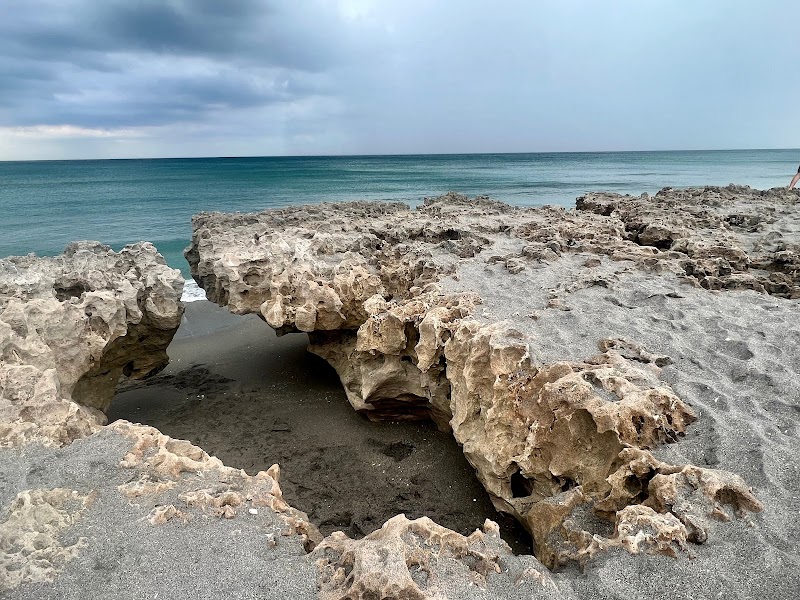
Blowing Rocks Preserve Adventures
Blowing Rocks Preserve is a striking coastal habitat on Jupiter Island known for its unique limestone shoreline and diverse ecosystems. Its natural beauty and ecological significance make it a prime destination for nature enthusiasts.
Popular Activities
Discovering the Untamed Spirit of Blowing Rocks Preserve: A Photographer's Adventure Guide
Venturing to Blowing Rocks Preserve on Jupiter Island, Florida, rewards seekers of both adventure and tranquility with a unique blend of coastal wonder and photographic opportunities. This extraordinary stretch of shoreline promises an experience that is both visually arresting and refreshingly unpretentious, perfect for photographers who relish the untamed beauty of nature. As one steps onto the sandy path leading toward the crashing waves, the Atlantic Ocean offers a powerful embrace, its salty air invigorating the senses and preparing you for the visual feast ahead.
The rocky coastline, a rarity in Florida, stands as the centerpiece—a testament to the raw, natural beauty so often polished away in the more commercial stretches of the state. Limestone formations, sculpted by the relentless energy of the ocean, form striking cliffs that rise dramatically from the shore. Each wave that collides with these formidable rocks sends up a spray of ocean mist like fireworks frozen in time, providing an ideal subject for photographers eager to capture the drama and motion of nature. This is where patience meets opportunity, as light and water dance together, presenting endless possibilities for that perfect shot.
Photographers should approach Blowing Rocks Preserve with both their artistic vision and practical preparation. The best times to shoot are during the golden hours of sunrise and sunset, where the angle of the sun casts long shadows and bathes the environment in warm hues. This soft light accentuates the rugged textures of the rocks and the subtle blues and greens of the surrounding vegetation. A sturdy tripod can prove invaluable, allowing for long exposure shots that capture the full dynamic range of light and movement at play.
The preserve is not merely a favorite for its rocky outcrops; it also supports diverse wildlife and delicate ecological habitats. The area is home to a variety of coastal flora, with hardy grasses and mangroves lining the paths and edging the shore. These, too, are subjects to be noticed, each adding an element of depth and context to your images. Sea birds glide effortlessly on the ocean breezes, and playful rays of sunlight break through clusters of clouds, adding to the allure of each frame.
In terms of planning your visit, it's essential to respect the environment you are documenting. Paths are clearly marked to protect native plant species and ensure the safety of visitors navigating the terrain. Footwear that provides both support and grip will serve you well, especially if you decide to explore the rocks themselves. Staying hydrated is crucial in the Florida sun, so carry a reusable water bottle to remain environmentally conscious.
As the day draws to a close, the tranquil ebb and flow of the ocean offer a perfect backdrop for reflection. This extraordinary enclave of natural wonder rewards photographers with some of the most dynamic and captivating coastal images in Florida. At Blowing Rocks Preserve, the harmonious blend of rugged seascapes and peaceful serenity serves as a powerful reminder of the planet's enduring artistry. It encourages adventurers to not only capture its beauty but also to carry the spirit of preservation into their future endeavors. Here, each photograph becomes a portal to an experience, a memory captured as much in one's mind as through the lens. Whether you're a seasoned or novice photographer, Blowing Rocks Preserve offers a canvas that invites exploration and inspires creativity, beckoning you to capture the restless energy of the sea and the enduring strength of the rock.
Plan Your Visit
Everything you need to know to prepare for an unforgettable trip to Blowing Rocks Preserve.
Entrance Requirements
Free access to the preserve, but donations are appreciated to support conservation efforts.
Best Time to Visit
Best visited from November to May for pleasant weather and lower humidity.
Visitor Information
Hawley Education Center
Getting There
Accessible via Florida's A1A Highway. Parking is available but limited.
Weather & Climate
The area enjoys a subtropical climate with mild winters and hot, humid summers. Thunderstorms are common in the summer months, while winters are generally dry and warm.
Conservation Efforts
Ongoing conservation efforts focus on controlling invasive species and protecting habitat for nesting sea turtles and other wildlife.
Camping in Blowing Rocks Preserve
Find the perfect spot to stay overnight and immerse yourself in the details.
Top Trails
Blowing Rocks Trail
Offers a beachfront walk with dramatic limestone formations and ocean views.
Trailblazer Tips
Visit during high tide for the most spectacular wave action.
Summer is the best time for turtle nesting season, offering remarkable wildlife views.
Weekends can be crowded, so plan for early morning visits for quieter explorations.
Wear reef-safe sunscreen to protect the delicate marine life while exploring the beach.
